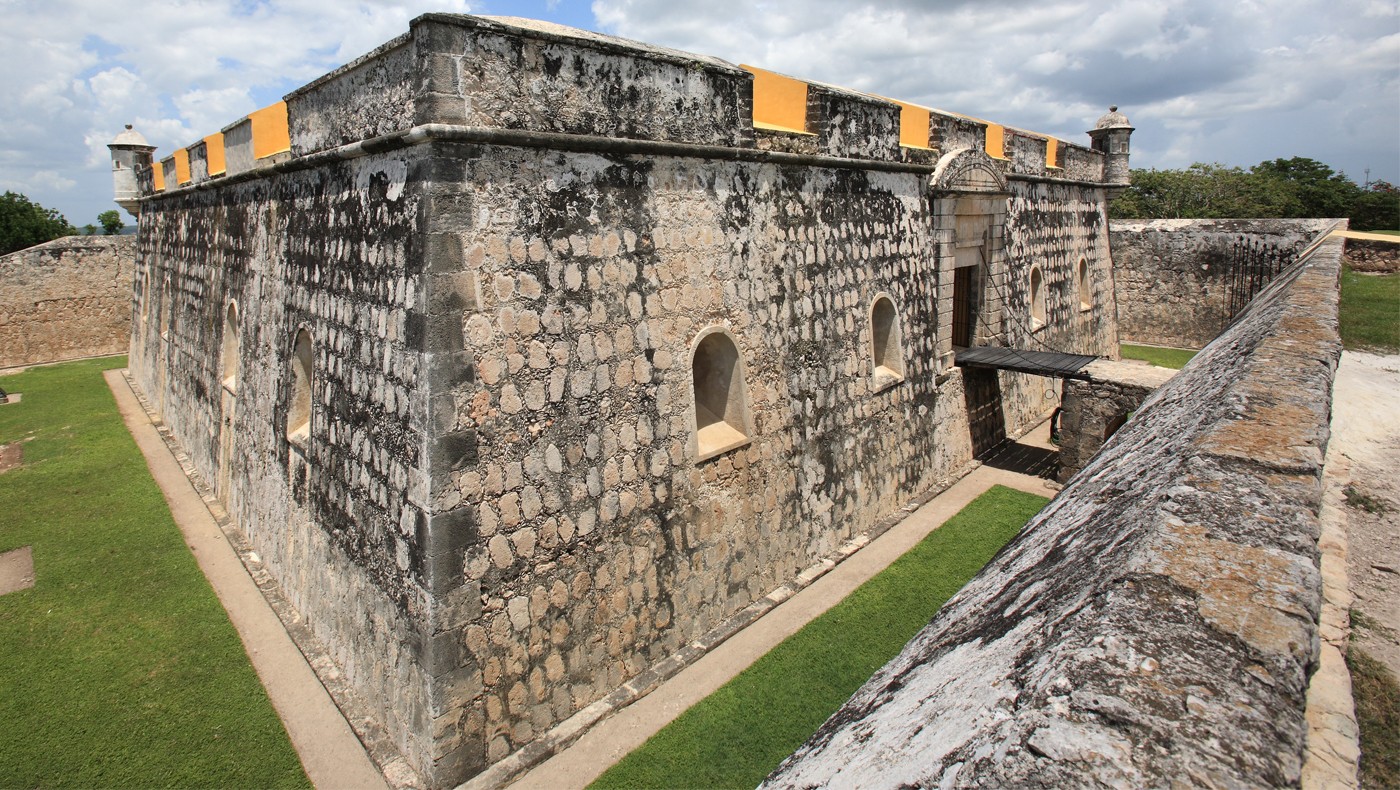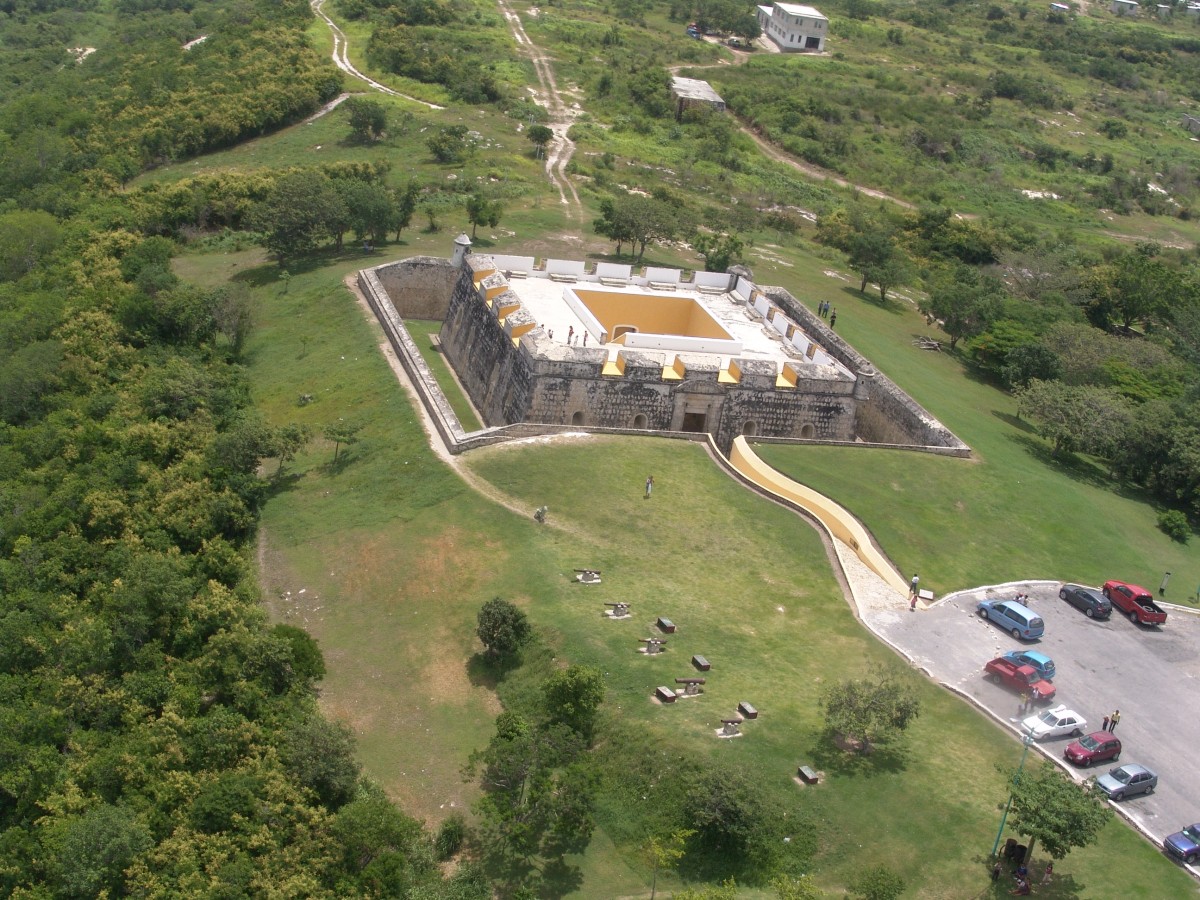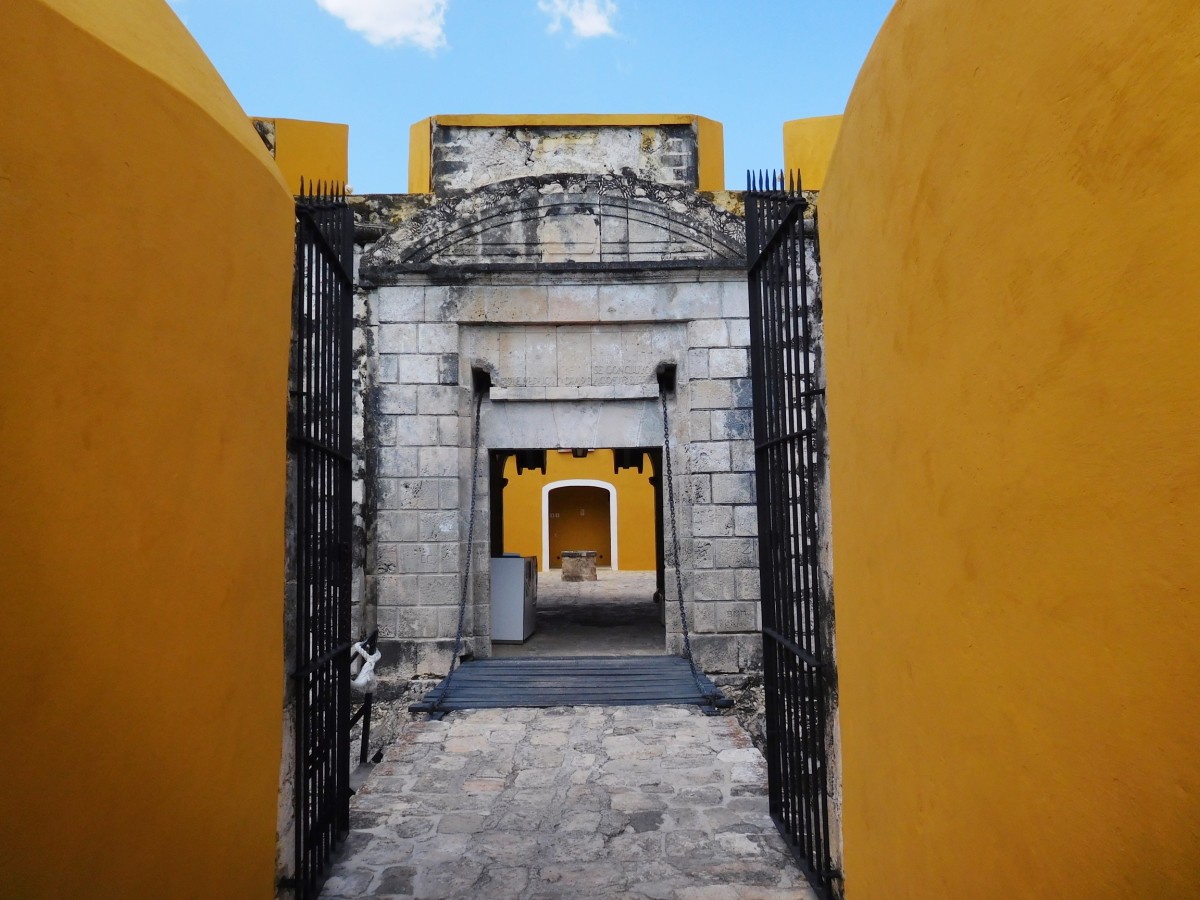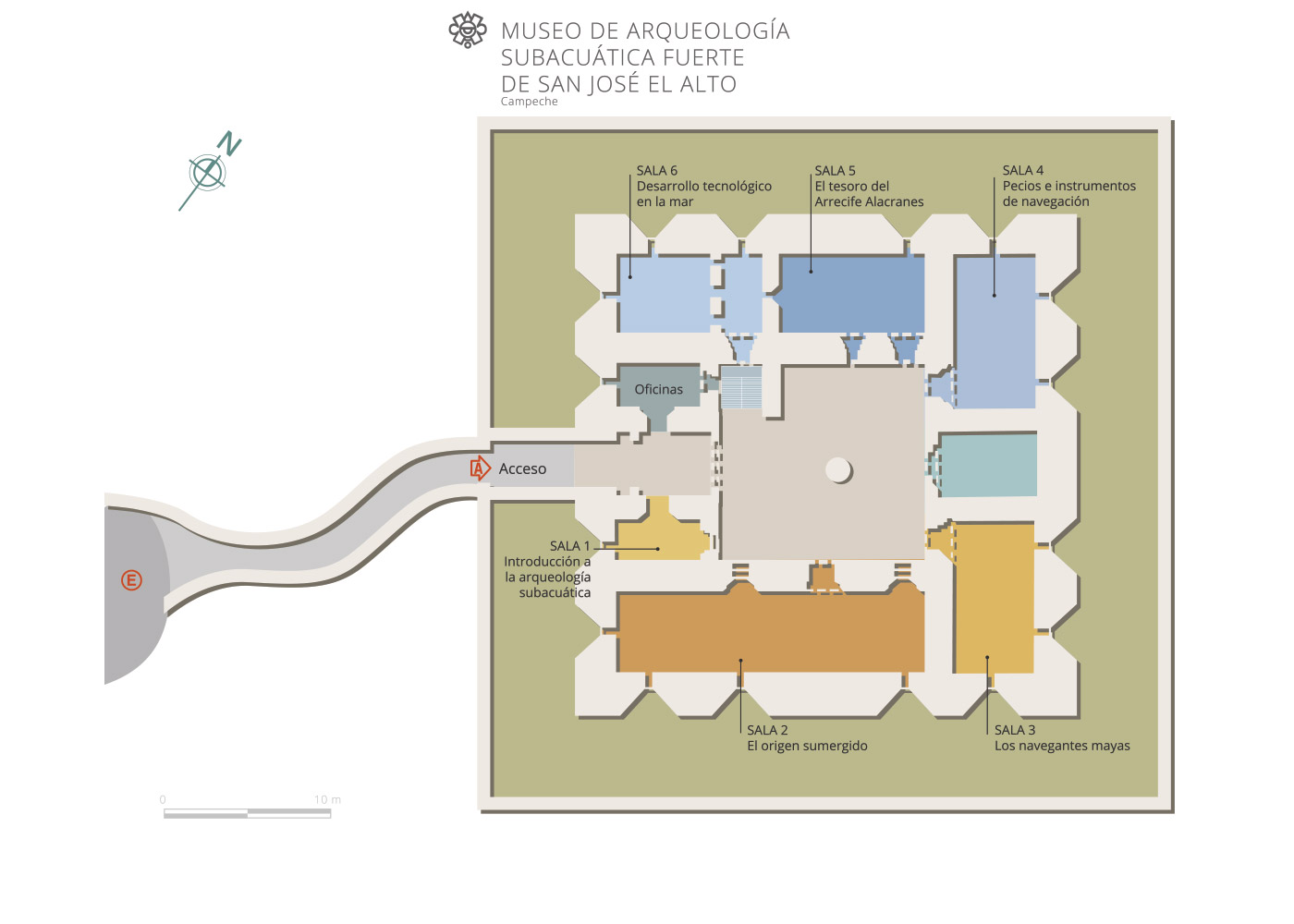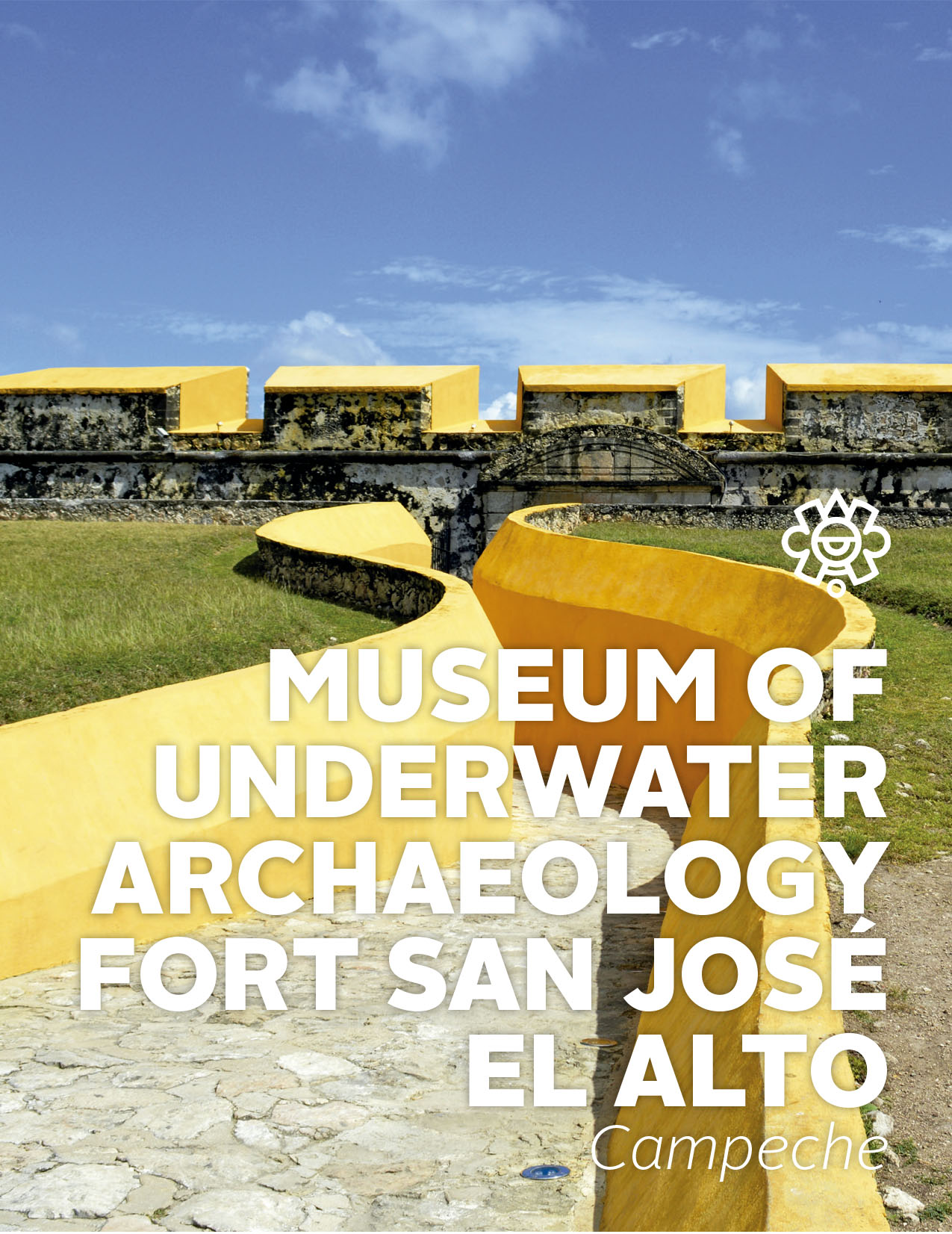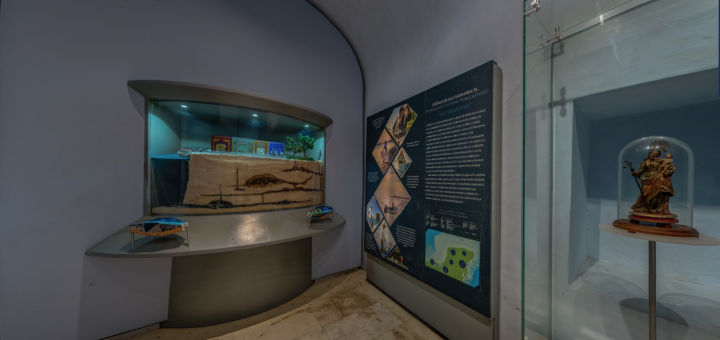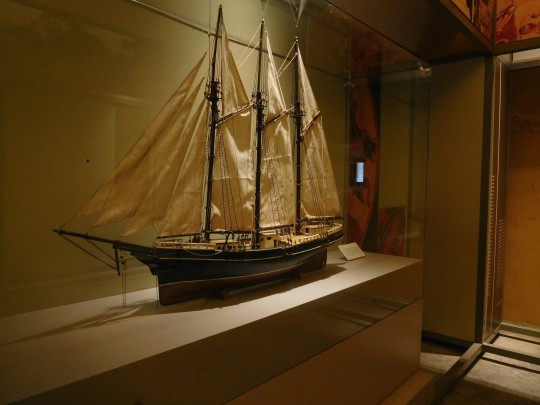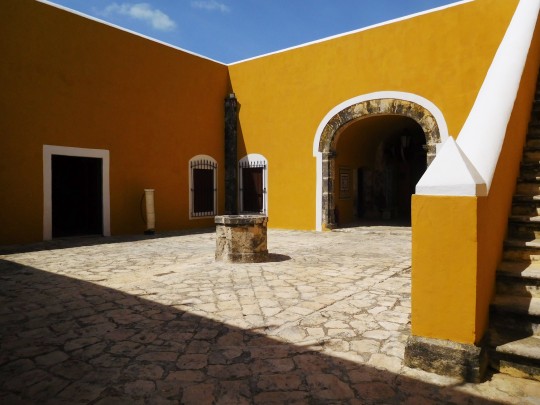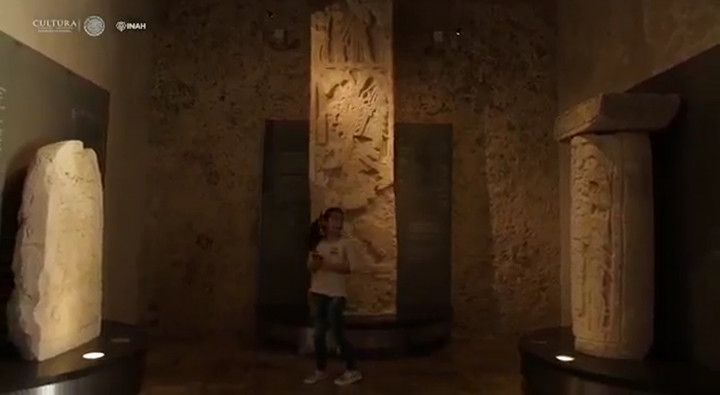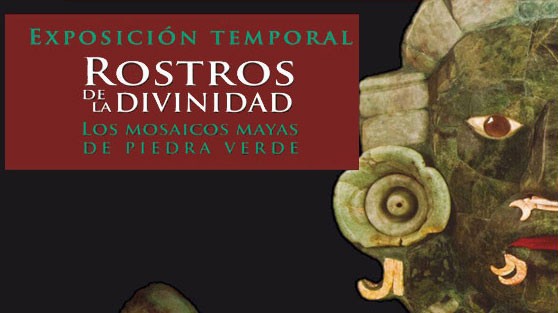Museo de Arqueología Subacuática Fuerte de San José
The fort of San José el Alto in Campeche, built for defence against the English, which also resisted sieges by the Yucatecans and the French, today contains an important collection of archaeological objects submerged in marine waters of the Gulf of Mexico and the Mexican Caribbean. In addition, the museum exhibits a collection of antique historical arms from the 16th to the 19th centuries, a rare cannon salvaged from the sea and scale models of famous ships.
Local
About the museum
The Underwater Archeology Museum of San José el Alto houses a notable collection of objects from archeological contexts under the sea of the Gulf of Mexico and in the Mexican Caribbean. The museum’s original name, the Museum of Ships and Arms of the Fort of San José el Alto, was changed in December 2017 to the Underwater Archeology Museum of San José el Alto, to reflect the addition of a gallery to display this collection, which is unique in Mexico.
The INAH Section for Underwater Archeology amassed its underwater collection over four decades of work on a variety of regional projects. The site has also received a Good Practice Statement under the 2001 UNESCO Convention for the Protection of Underwater Heritage. Its purpose is to promote the protection of this aspect of heritage through ownership and visibility.
The museum has six galleries in service, displaying weapons from the sixteenth to nineteenth centuries. The collection includes sabres and swords which belonged to Don Pedro Sáinz de Baranda y Borreiro, General Antonio Gaona, Don Agustín de Iturbide, General Manuel Gómez Pedraza and to Don Mariano Escobedo. Other interesting pieces which can be seen in the museum are: a 1552 demi-culverin which was a cylindrical bronze cannon, found in the Sound of Campeche and the oldest of its type in the western hemisphere; the “greyhound” tiller as it is known because of the ebony carving of a dog found in the late nineteenth century in the bed of the river Viejo or Seco, which is a tributary of the river Palizada. Among the scale models of ships, the galleon stands out, as it demonstrates the characteristics of the trading vessels which crossed the Atlantic between Spain and America. Another interesting ship is the copy of the Golden Hind, a fine example of naval model-making which shows the typical structure of a pirate ship, captained by the English corsair Francis Drake, who besieged the port of San Francisco de Campeche with his cousin John Hawkins in 1567.
Among the most significant of the easel oil paintings is a painting of Saint Ignatius of Loyola dating to the start of the eighteenth century. It is by Cristóbal de Villalpando, a very significant artist of the viceregal period. The portrait of the famous Campeche sailor Don Pedro Sáinz de Baranda y Borreiro, who directed the siege of the castle of San Juan de Ulúa, in Veracruz, achieving the capitulation of the last Spanish stronghold, bringing about Mexican independence on November 23, 1825.
The museum highlights begin with the building housing the museum itself, which was built in the eighteenth century, representing the advances in military architecture of the period. Other things worth looking at are the man-made slope leading up to the walls (which made it easy to spot potential attackers), the narrow path, which served the same defensive purpose for the entrances, the moat, the merlons (narrow reinforced battlements, between which cannons could be fired for better protection), the embrasures (narrow windows to protect the people firing from inside), the sentry towers (small jutting towers with embrasures in the angles of the walls of the fort to shoot in various directions), the scarp and a counterscarp (walls sloped inwards and outwards to make those attacking the fort more visible) and the parapet walk (the wide rooftop where the troops and canons maneuvered).
It is also well worthwhile standing on the parapet to look at the view, whether the sea horizon, the coastline and wetlands of the Los Petenes Biosphere Reserve to the north, or most popular of all, weather permitting, the sunset to the west.
France, Spain and Italy were united by Bourbon family pacts which drew them into wars with serious consequences. In the Seven Year War (1756-1753) Spain was forced to declare hostilities on England. In 1762 a British fleet took control of Havana and Manila. When peace was signed, Spain recovered its ports but lost Florida with its port of San Agustín founded in 1565, while England’s rights over Belize were recognized.
The situation of the Yucatan became particularly delicate, coming under threat from the English because of its strategic position as the other peninsula at the entrance to the Gulf of Mexico. For this reason Don Antonio Olivier, the governor of San Francisco de Campeche wrote to Charles III, the king of Spain, to inform him that his position was not tenable in the face of England’s expansionist ambitions. The engineer and infantry brigadier Agustín Crame then proposed a project to the crown which included the construction of six military forts including the fort of San José el Alto, which was also known as the “fort of the three stones.”
Construction was completed in 1792 and included the coastal batteries of San Matías and San Lucas, whose lines of fire would impede an enemy landing. The supervision of the works was handled by the king’s lieutenant Don José Sabido de Vargas. It came under the administration of the War Ministry after Mexican independence, although it was abandoned for a long time before its eventual restoration in 1988.
The INAH Section for Underwater Archeology amassed its underwater collection over four decades of work on a variety of regional projects. The site has also received a Good Practice Statement under the 2001 UNESCO Convention for the Protection of Underwater Heritage. Its purpose is to promote the protection of this aspect of heritage through ownership and visibility.
The museum has six galleries in service, displaying weapons from the sixteenth to nineteenth centuries. The collection includes sabres and swords which belonged to Don Pedro Sáinz de Baranda y Borreiro, General Antonio Gaona, Don Agustín de Iturbide, General Manuel Gómez Pedraza and to Don Mariano Escobedo. Other interesting pieces which can be seen in the museum are: a 1552 demi-culverin which was a cylindrical bronze cannon, found in the Sound of Campeche and the oldest of its type in the western hemisphere; the “greyhound” tiller as it is known because of the ebony carving of a dog found in the late nineteenth century in the bed of the river Viejo or Seco, which is a tributary of the river Palizada. Among the scale models of ships, the galleon stands out, as it demonstrates the characteristics of the trading vessels which crossed the Atlantic between Spain and America. Another interesting ship is the copy of the Golden Hind, a fine example of naval model-making which shows the typical structure of a pirate ship, captained by the English corsair Francis Drake, who besieged the port of San Francisco de Campeche with his cousin John Hawkins in 1567.
Among the most significant of the easel oil paintings is a painting of Saint Ignatius of Loyola dating to the start of the eighteenth century. It is by Cristóbal de Villalpando, a very significant artist of the viceregal period. The portrait of the famous Campeche sailor Don Pedro Sáinz de Baranda y Borreiro, who directed the siege of the castle of San Juan de Ulúa, in Veracruz, achieving the capitulation of the last Spanish stronghold, bringing about Mexican independence on November 23, 1825.
The museum highlights begin with the building housing the museum itself, which was built in the eighteenth century, representing the advances in military architecture of the period. Other things worth looking at are the man-made slope leading up to the walls (which made it easy to spot potential attackers), the narrow path, which served the same defensive purpose for the entrances, the moat, the merlons (narrow reinforced battlements, between which cannons could be fired for better protection), the embrasures (narrow windows to protect the people firing from inside), the sentry towers (small jutting towers with embrasures in the angles of the walls of the fort to shoot in various directions), the scarp and a counterscarp (walls sloped inwards and outwards to make those attacking the fort more visible) and the parapet walk (the wide rooftop where the troops and canons maneuvered).
It is also well worthwhile standing on the parapet to look at the view, whether the sea horizon, the coastline and wetlands of the Los Petenes Biosphere Reserve to the north, or most popular of all, weather permitting, the sunset to the west.
France, Spain and Italy were united by Bourbon family pacts which drew them into wars with serious consequences. In the Seven Year War (1756-1753) Spain was forced to declare hostilities on England. In 1762 a British fleet took control of Havana and Manila. When peace was signed, Spain recovered its ports but lost Florida with its port of San Agustín founded in 1565, while England’s rights over Belize were recognized.
The situation of the Yucatan became particularly delicate, coming under threat from the English because of its strategic position as the other peninsula at the entrance to the Gulf of Mexico. For this reason Don Antonio Olivier, the governor of San Francisco de Campeche wrote to Charles III, the king of Spain, to inform him that his position was not tenable in the face of England’s expansionist ambitions. The engineer and infantry brigadier Agustín Crame then proposed a project to the crown which included the construction of six military forts including the fort of San José el Alto, which was also known as the “fort of the three stones.”
Construction was completed in 1792 and included the coastal batteries of San Matías and San Lucas, whose lines of fire would impede an enemy landing. The supervision of the works was handled by the king’s lieutenant Don José Sabido de Vargas. It came under the administration of the War Ministry after Mexican independence, although it was abandoned for a long time before its eventual restoration in 1988.
December 1995
December 2017
Map
An expert point of view

Antonio Benavides Castillo
Centro INAH Campeche
Practical information
Tuesday to Sunday from 08:00 to 17:00 hrs.
$75.00 pesos
Calle 5 por Avenida Francisco Morazán s/n,
Colonia San José el Alto, C.P. 24026,
San Francisco de Campeche, Campeche, México.
Colonia San José el Alto, C.P. 24026,
San Francisco de Campeche, Campeche, México.
Sugerencia
Por favor considere llegar al sitio una hora antes del cierre para contar contar con el tiempo suficiente para su visita.
-
+52 (981) 816 9136. ext. 138036
-
This email address is being protected from spambots. You need JavaScript enabled to view it.
-
FACEBOOK
Directory
Encargado
Jonathan Miguel García González
This email address is being protected from spambots. You need JavaScript enabled to view it.

